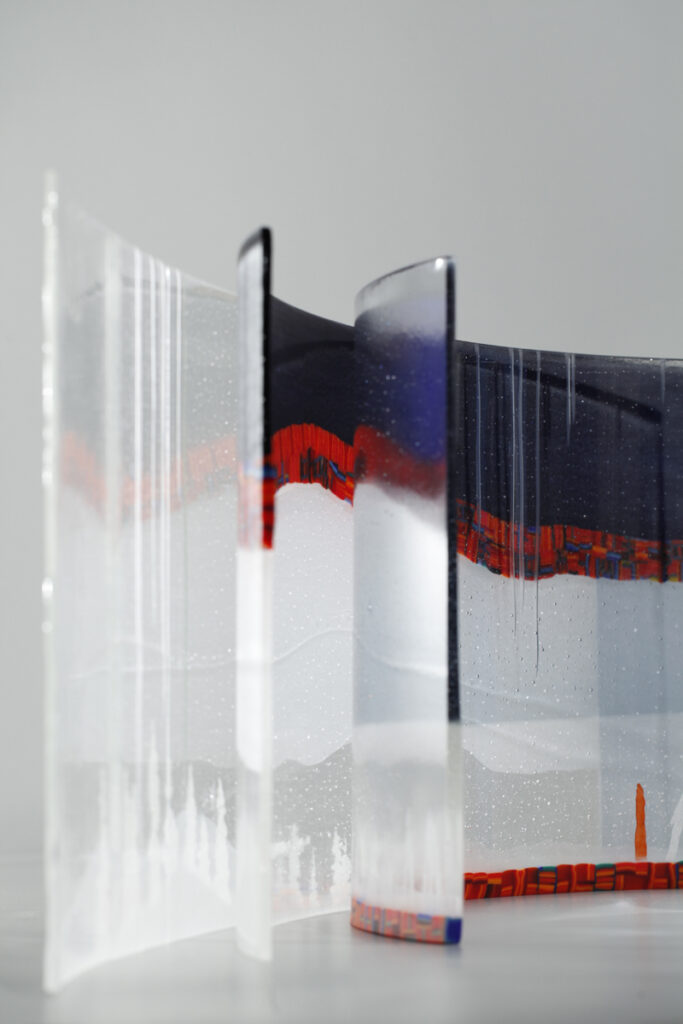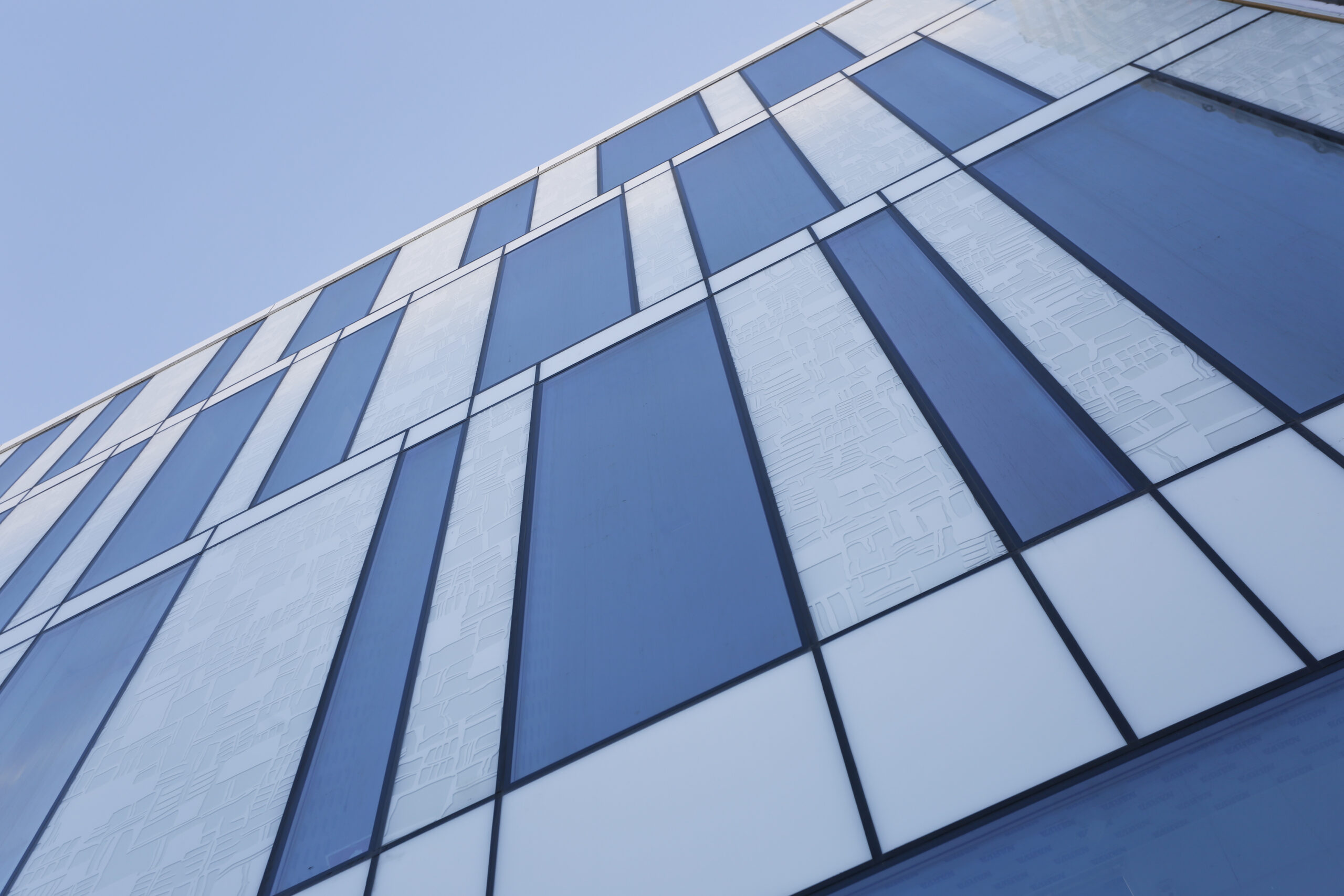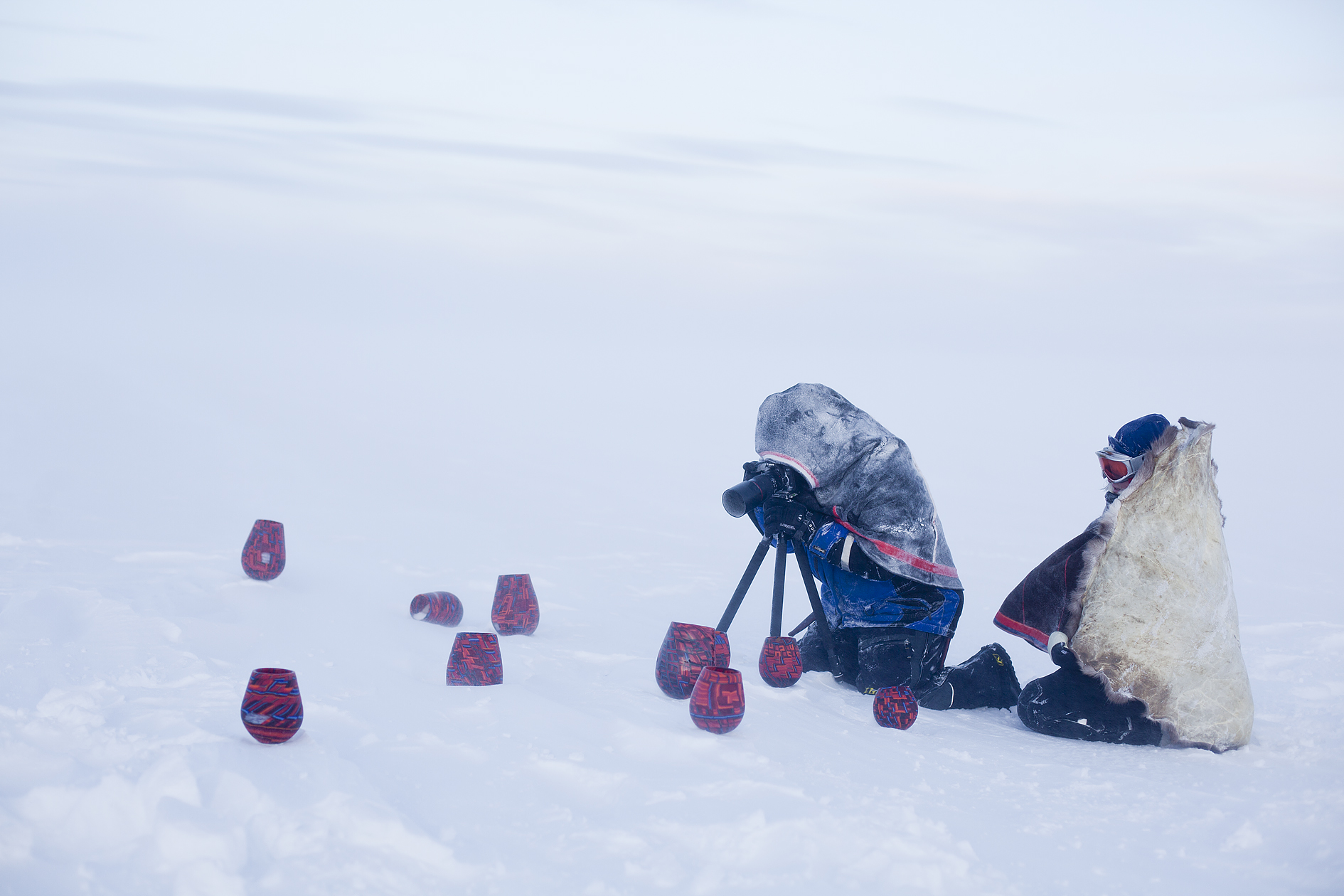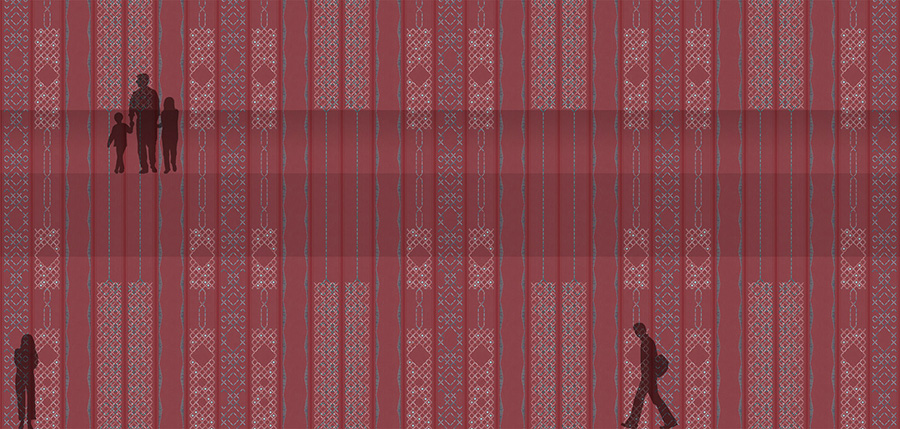Akenberg meets
Monica L Edmondson
Swedish, Sámi, artist, woman, mother. Monica L Edmondson carries many titles. Growing up in Sápmi, the cultural region of the Sámi people, she always had an urge to express herself, her thoughts and emotions. When she encountered the material of glass and experienced its strengths and beauty, she found a way to tell her story.
With a degree in visual arts from Canberra School of Art in Australia, this acclaimed artist today works from her studio and glass workshop in Tärnaby, examining defining moments in life, and the importance of stepping out of your comfort zone.
– My working process starts with a thought or a feeling which I want to capture and materialise. Sometimes it is glass, other times it can be through stonework, textile or whatever material best suited for what I want to express. In public art commissions and in my collaborations with architects, I do lots of site-specific research and talk to locals and users of that space before I start the artistic process. I like when I can engage the so called traditional and handicraft within art in unexpected spaces and urban architecture. I tend to use glass most frequently as it is the material I know best. Glass is forever strong if taken care of. And yet, in a split of a second, it can be forever gone if not looked after according to its characteristics and needs. Just like human beings. Like our nature. Like us Sami people. Like glass.
Which part of your process is the most important one and why?
– Most important is to be true to myself and always come back to the initial driving force of why I do what I do. It’s so easy to be side tracked in today’s society and that’s why I think I live in the most perfect part of the world, a small village in northwest Sweden. Yet, I do feel part of the urban world and the art community through internet.

Can you give us some examples of projects you have been involved in?
– In 2014 I finalized “100 Migratory”, a local and world-wide art project dealing with the notion of origin and migration, in which I sent hundred glass vessels around the world. The same year our oldest daughter was diagnosed with adrenocortical cancer and my experience of helping her through years of operations and chemotherapy is partly documented in the site-specific art work Malign:Closure (2019) for the exhibition “En Vacker Utställning” at Konstmuseet i Norr in Kiruna. I have collaborated with architects, such as an art consultant, and have designed several facades in glass and sheet metal for new buildings in urban settings. Recently, I opened my latest site-specific public light installation in Kåfjord municipality for a new health center in northern Norway.
What does your daily life look like?
– My days can be very different. One day I might work by the computer, another day I stand by the lathe with a visor and earmuffs and grind glass. A winter day it might take me half day to 1. shovel snow to get out of our house and 2. shovel myself into the studio before I can start work.
You are very productive; from where do you get your energy?
– Without the lake on one side of my studio and glass workshop, and the mountain behind it, I would not be able to recharge energy as easily as I can right now. I need solitude and a peaceful environment as I have so much going on in my head. So much that I want to express as it is.


What does a perfect Monday look like for you?
– I like to start the working week with an early morning ski up the mountain behind my studio and glass workshop or, in summer, a run along the river. After a shower and breakfast, I start my work hands-on with glass – and no online computer work! – until my youngest daughter finish school around 4 PM. That’s my dream Monday.
To get new inspiration, sometimes you need to see the world and meet new cultures. What is an unforgettable place you’ve travelled to in the past year?
– Last year was my travelling year of contrasts. Every fifth year we fly to Australia to meet my husband’s relatives. A strong moment was when my daughter and I found an aboriginal hidden sacred woman’s site of the Yuin people. We knew it was somewhere in Gulaga National Park and we almost gave up trying to find it when, suddenly, I got a glimpse of a hidden path leading into this area of huge granite boulders – it felt almost like being in nature’s own cathedral. I experienced a very special peaceful atmosphere there of being part of something inexpressible. That atmosphere, which I can’t describe in words, is something I would like to explore in my art one day. I also spent some time in New York City and Washington DC a few months ago. The constant pulse and sound of a city were fascinating and made me think of us humans like ants striving towards a busy anthill. Guggenheim architecture, Brooklyn Bridge and the silhouette of Manhattan getting struck by early morning sunlight are strong and beautiful memories from this trip. NYC has lots to offer in itself so no wonders many of us love it.
Tell us about your next project!
– Right now, I work together with two other artists, Britta Marakatt-Labba and Anders Sunna, in a collaboration initiated by Liljewall Arkitekter in Gothenburg. We were asked to make our artistic contribution to a concrete facade and floor glass installation of the new education centre in Gällivare, called Kunskapshuset. The three of us complement each other and we had lots of fun during our workshop days for this project. It is also exciting to work in concrete and learn more about its possibilities as an artistic material.

Where do you see yourself in five years?
– The older I get, the more I appreciate the simple fact of being healthy and to be able to live an uncomplicated life in balance and harmony.
How would you describe your personal style?
– A total mix match of functional sportswear, black tops and jeans, and vintage coats and jackets that my mother wore in the 50’s. The last item of clothing I added to my wardrobe was actually underwear from the Australian brand Bonds, which style and size suits me perfectly. So, I stocked up underwear for five years when I was there last summer.
Favourite fashion designer?
– I like skilled Sami textile designers who make fashion relevant and sometimes also controversial in today’s society. However, always based on great knowledge and respect of our Sami culture and traditions. Anna-Stina Svakko and Katarina Kielatis are two of them.
Who are the style icons that inspires you?
– People on the streets of Reykjavik and the small fashion design brands in Iceland attract my taste of style.
What does the Swedish nature mean to you?
– Everything. I am fortunate to live in an area where we can drink the water straight from the lake outside our house and we can eat whatever nature offers. This is something very basic to our survival as humans: clean water to drink, a healthy ecosystem and knowledge to take care of what nature offer us as food, shelter and medicine.
Spontaneously, what do you know about cellulose acetate?
– To be honest I didn’t know much more than acetate could be used as an artistic material for painting and sculpture. I had to google it and now I know it’s a biodegradable, non-harmful material used in the frames of your sunglasses.
And which one is your favourite frame from Akenberg?
– My favourite is Tärendö in colourway Sea crest meadow. They all look good but the Tärendö frame really struck my heart.
Main photographer: Mikael Rutberg





